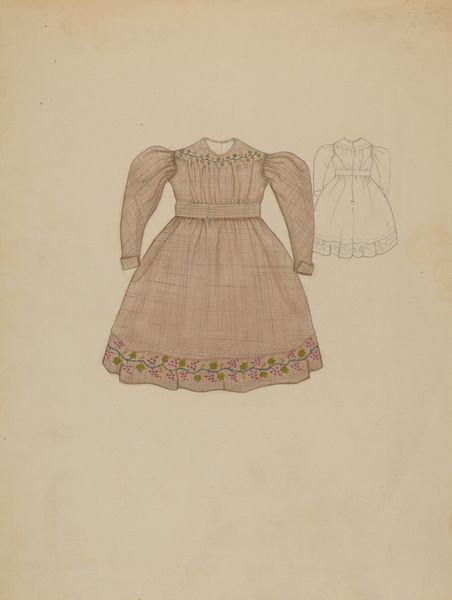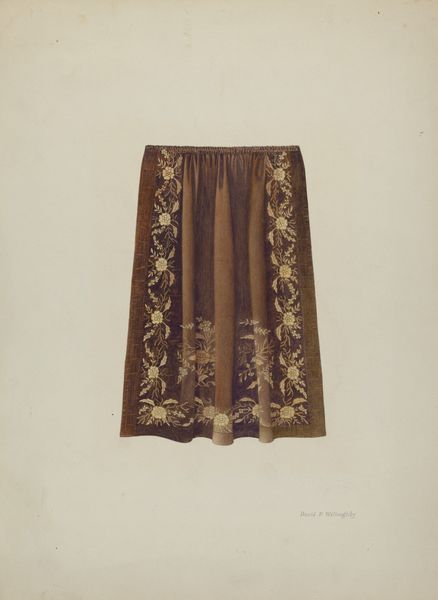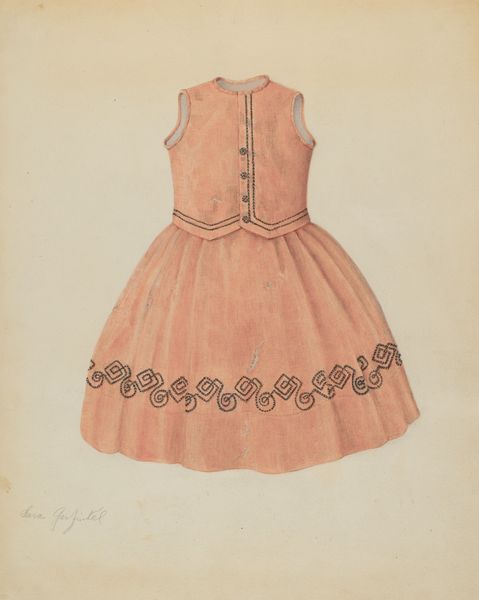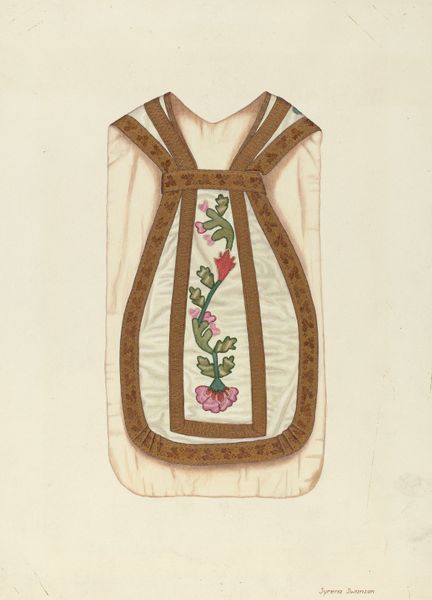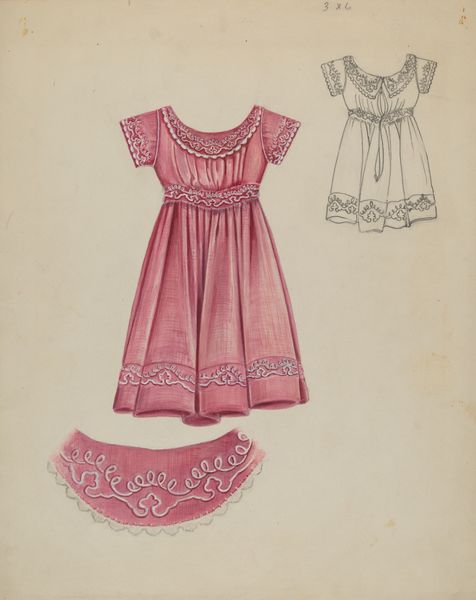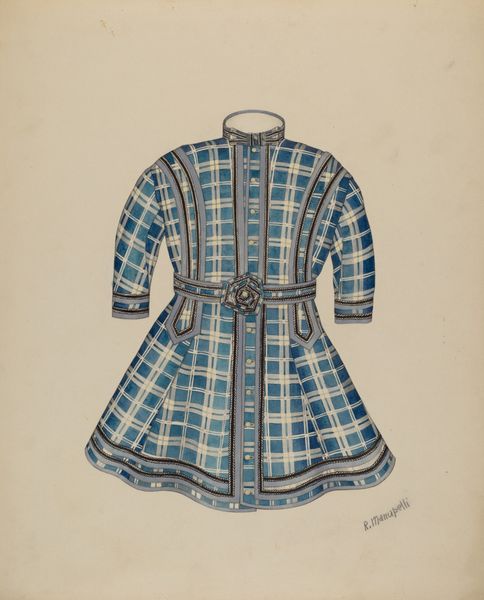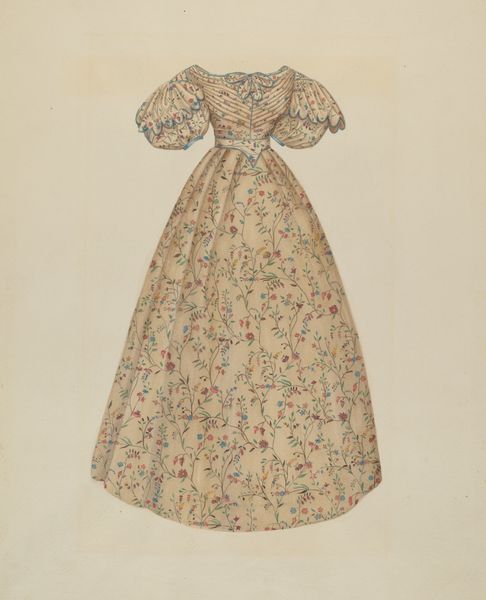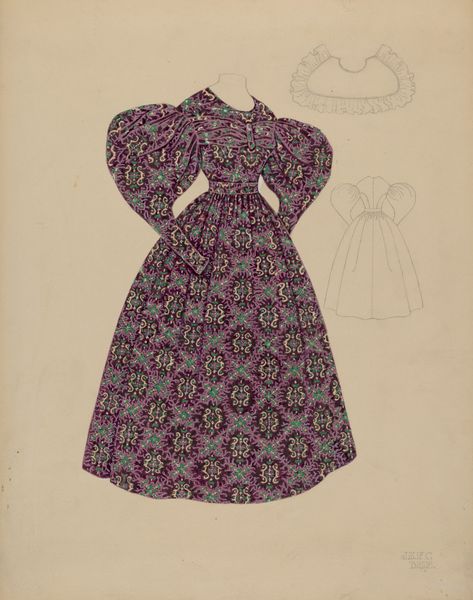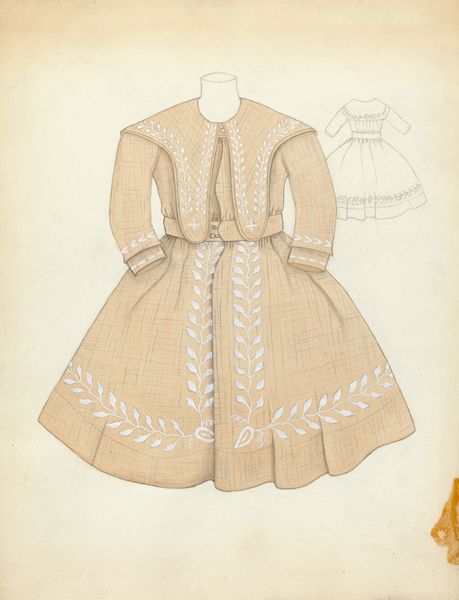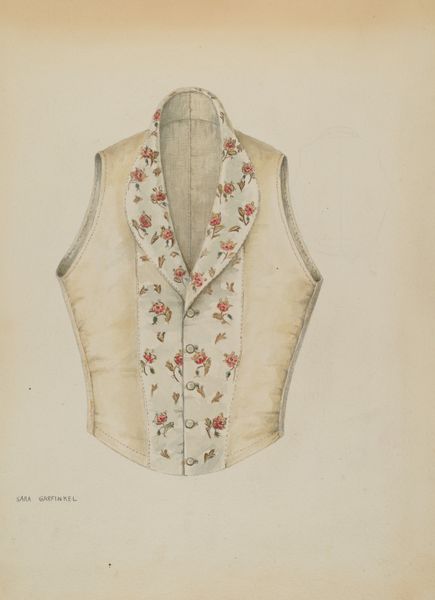
drawing, textile, watercolor
#
drawing
#
textile
#
watercolor
#
textile design
#
decorative-art
Dimensions: overall: 55.5 x 60 cm (21 7/8 x 23 5/8 in.) Original IAD Object: 23 7/8" wide; 21 7/8" long
Copyright: National Gallery of Art: CC0 1.0
Curator: This "Sewing Apron" from around 1939, attributed to Edith Magnette, presents a fascinating blend of practicality and artistry, doesn’t it? Editor: Absolutely. My first thought is, even though it's simply an apron, it exudes such a whimsical, almost celebratory feel. The floral motifs soften the utility. Curator: Magnette used both drawing and textile media, as well as watercolor to depict the object; her composition layers everyday functional design and decorative-art stylistic flourishes. Consider how that decorative-art aspect can communicate status, identity, taste. Editor: True, the embellishments complicate what would otherwise be a simple piece of utilitarian clothing. The floral designs read as traditionally feminine iconography, suggesting a space for creativity and cultivation within the domestic sphere. Two small pockets punctuate its front—promising, perhaps, a narrative to unravel. Curator: And what of those stylized grapes and floral elements specifically? Are they merely decorative, or might there be other encoded meanings? I wonder about the symbolism—prosperity, abundance... perhaps even a connection to classical imagery or folklore. Editor: The fruit is an interesting consideration, as the design invokes symbols of plenty—domestic abundance within the reach of its wearer. What is truly telling is how its design relates to contemporary social movements... was Magnette influenced by currents like the Arts and Crafts movement, which valued handmade items and challenged mass production? Curator: Indeed. Placing this work within the larger socio-political currents, considering movements championing handmade quality versus industrialized manufacturing provides greater context, certainly for interpreting Magnette’s message and intention. Editor: The integration of natural motifs is noteworthy—flowers and fruit not only beautify, but connect to a wider cycle of growth and fruition—domesticated images intended for the personal space of a domestic sphere. Curator: The apron, viewed as an art piece, therefore, raises critical questions. Does elevating such an item change its cultural significance and alter its projected message for posterity? Editor: That tension – the meeting point of functionality and elevated art—that's what holds so much interest here. To frame its existence is to also think about art’s social value and role. Curator: Precisely. What began as merely functional and aesthetically pleasing can actually carry deeper cultural and art historical value.
Comments
No comments
Be the first to comment and join the conversation on the ultimate creative platform.
